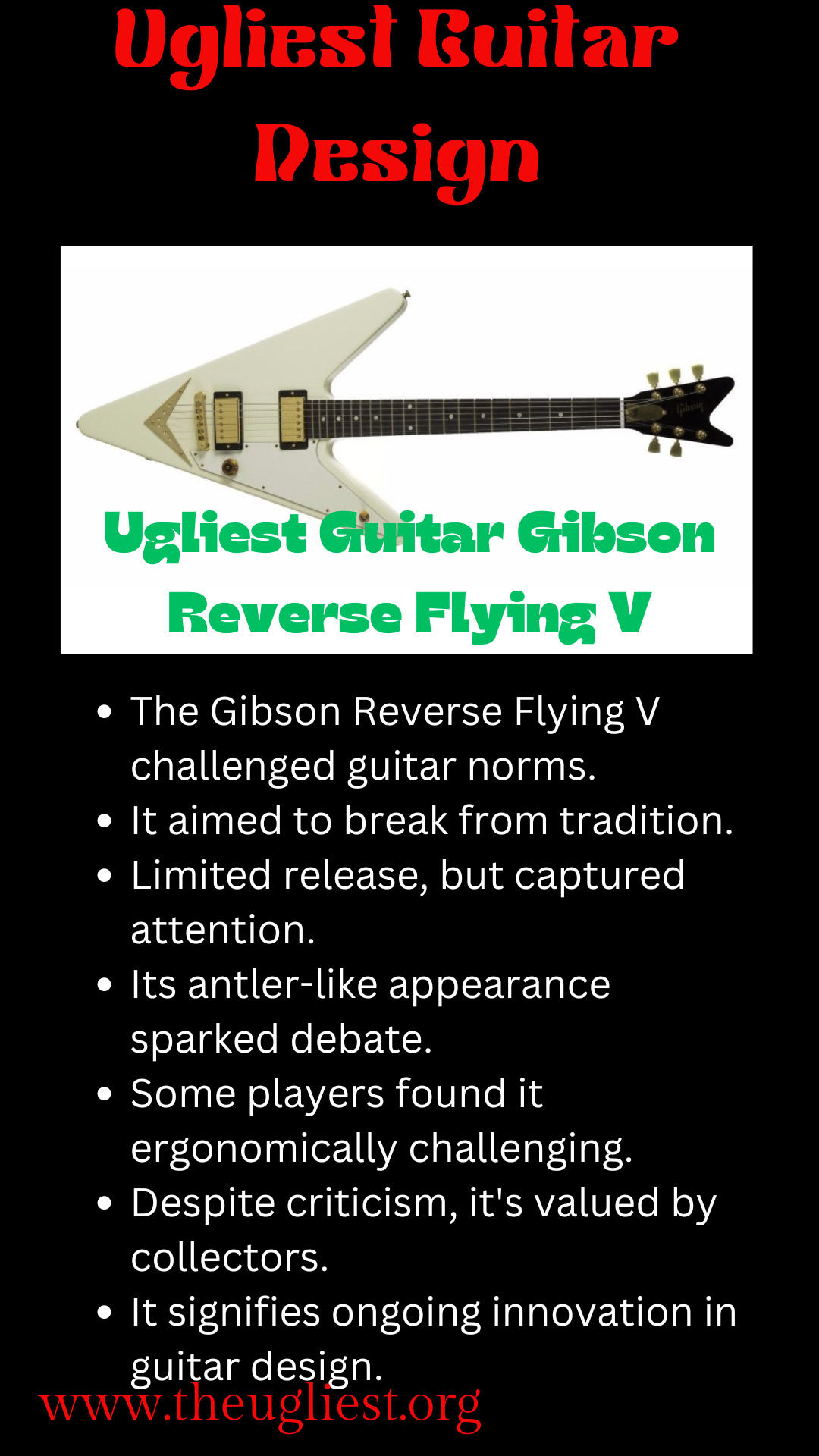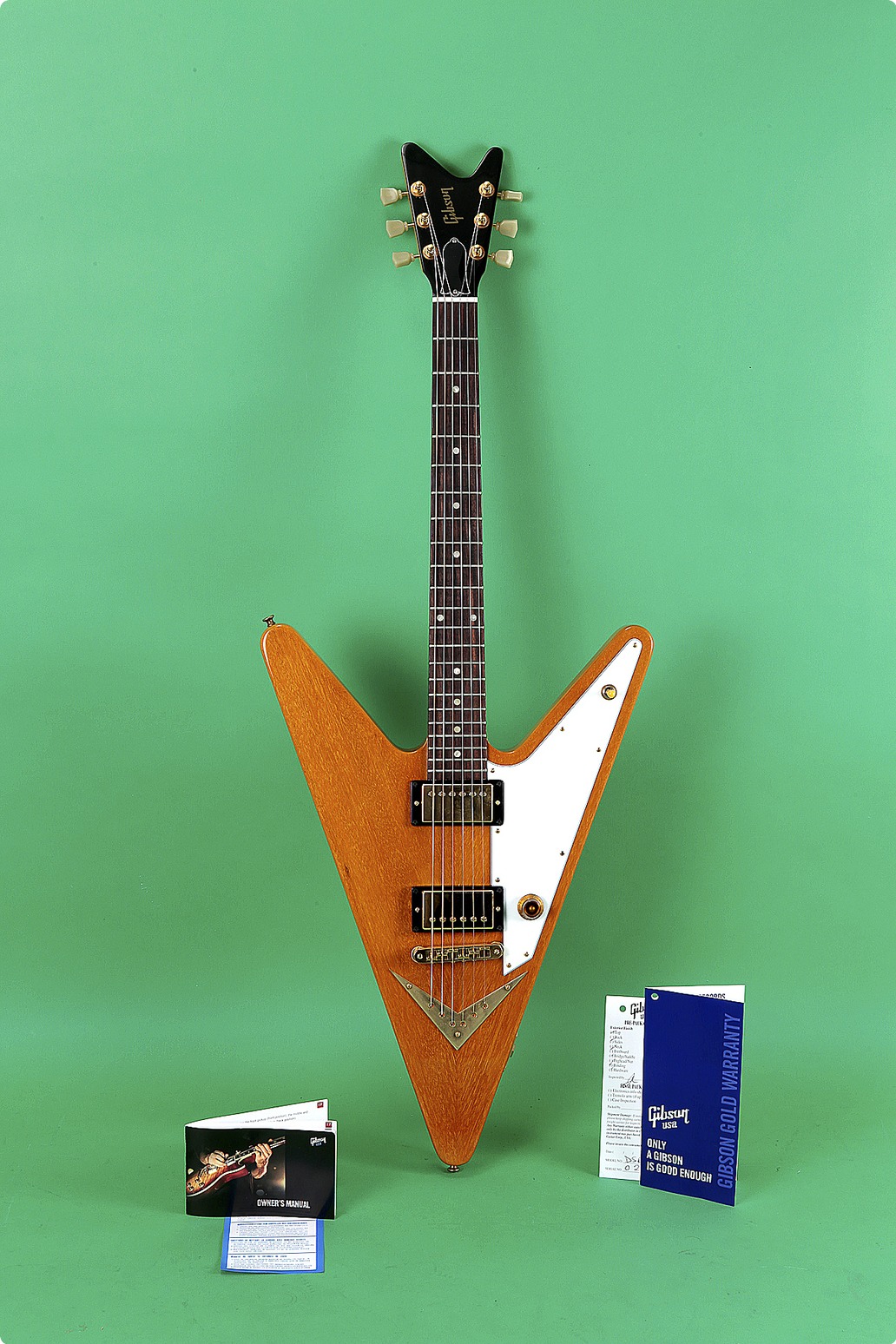Ugliest Guitar Design Gibson Reverse Flying V.
The emergence of the Gibson Reverse Flying V marked a pivotal moment in guitar history.
Born out of a desire to challenge the status quo.
In a market saturated with traditional designs, this guitar represented a bold departure.
Signaling Gibson’s intent to push boundaries and redefine the aesthetics of electric guitars.
As a limited edition release, it captured the imagination of musicians and collectors alike.
Sparking anticipation and intrigue within the industry.

The Concept Behind the Controversy
The Reverse Flying V was a big change from normal guitar designs.
Gibson wanted to start conversations and make people rethink how guitars should look.
By making something different, they wanted to talk about how musical instruments can change.
They wanted to show that even in a traditional industry, there’s room for new ideas.
Flipping Tradition Upside Down
By inverting the iconic Flying V shape, Gibson created a guitar that defied convention and demanded attention.
This bold departure from tradition resulted in a visually striking instrument that stood out amidst a sea of conformity.
The Reverse Flying V’s unconventional silhouette sparked curiosity and debate.
Establishing it as a symbol of creative experimentation within the guitar community hence Ugliest Guitar Design
The Antler-like Anomaly
The Reverse Flying V looked like antlers, which made it cool and mysterious.
But this weird shape made it hard to play comfortably.
Still, its strange look meant it would be remembered in guitar history.
Ergonomics vs. Aesthetics: The Player’s Dilemma
Guitar players had a problem with the Reverse Flying V:
They had to decide between making it look good and making sure it worked well.
Some liked how different it looked, but others thought it wasn’t comfy to play.
This tension between form and function prompted discussions about the role of tradition versus innovation in shaping the evolution of guitar design.
Reception and Legacy
The reception to the Reverse Flying V was as varied as its design, with opinions ranging from fervent admiration to outright skepticism.
Yet, regardless of one’s perspective, there is no denying the guitar’s enduring legacy.
People really want the Reverse Flying V as a collector’s item.
It shows how Gibson isn’t afraid to try new stuff and go beyond what’s normal in design.
The Collector’s Perspective
For collectors, the Reverse Flying V represents a prized artifact.
Embodying the spirit of adventure and innovation that defines Gibson’s legacy.
Its scarcity and distinctive aesthetics make it a coveted addition to any collection.
Serving as a tangible reminder of a bygone era of bold experimentation.
The Critic’s Viewpoint
People who don’t like the Reverse Flying V often talk about what they think is wrong with it.
They say it’s not easy to use and it might not feel good to play.
But even if people don’t like it, they admit that Gibson was brave to try something new.
Because it’s so different, people will keep talking about it for a long time.
Also Read:Ugliest Painting ever: The Enigma of Beauty Quentin Matsys’ The Ugly Duchess
The Future of Guitar Innovation
The Reverse Flying V shows how guitars keep changing.
Trying new things and taking risks is key to moving forward in the guitar world.
As tech gets better and people keep trying new stuff, guitars will keep getting better too.
Each new design will push what guitars can do even more.
